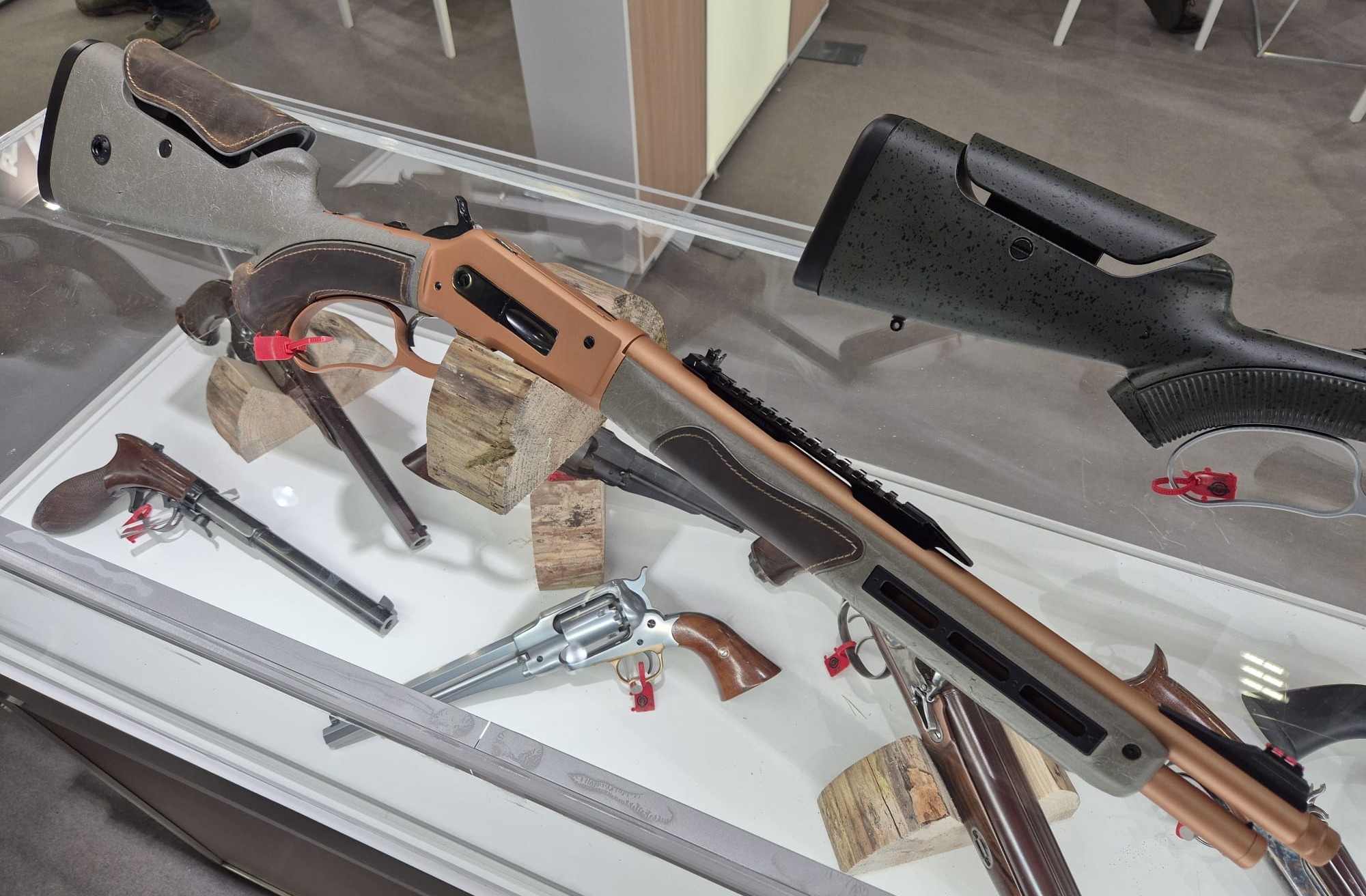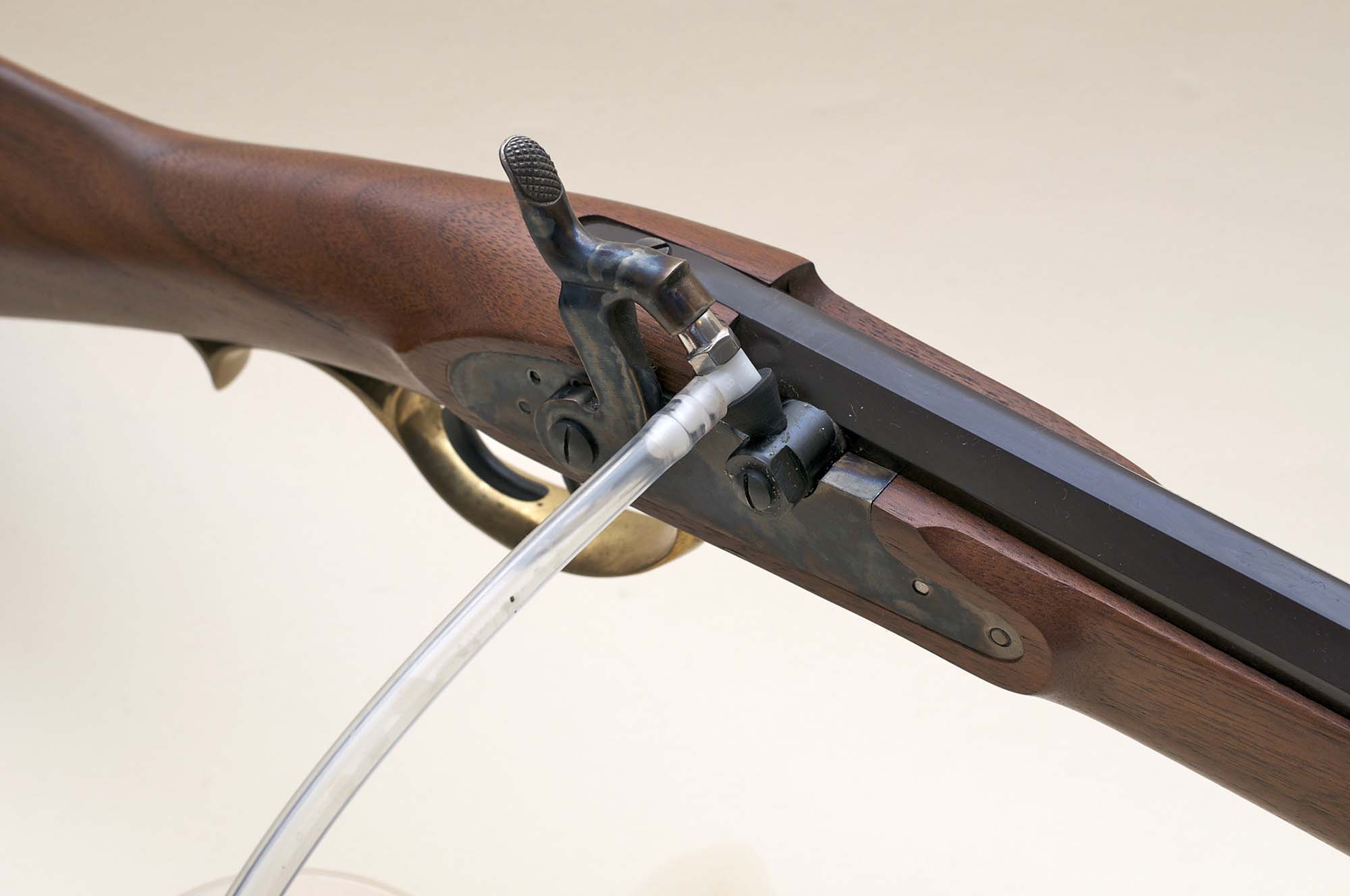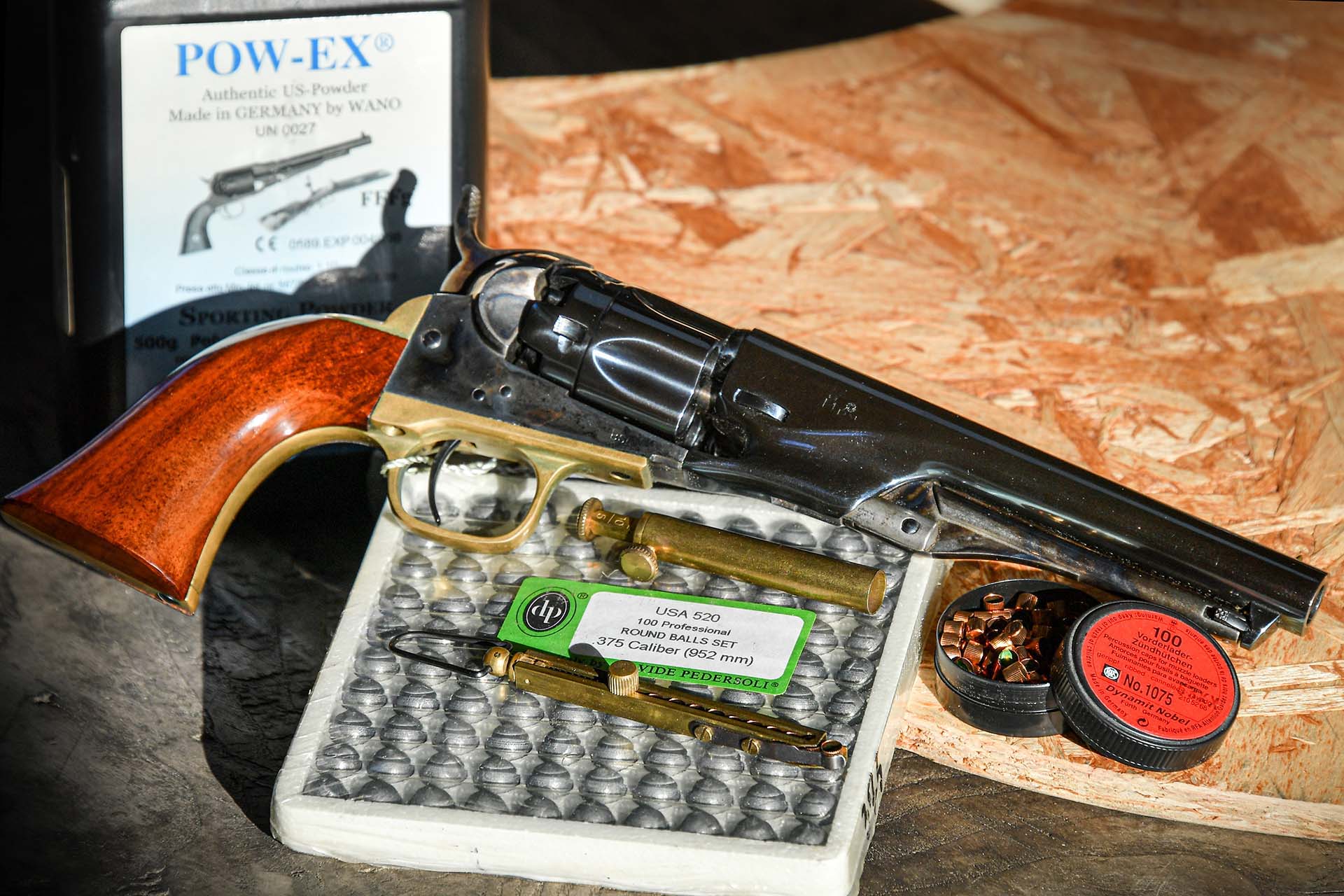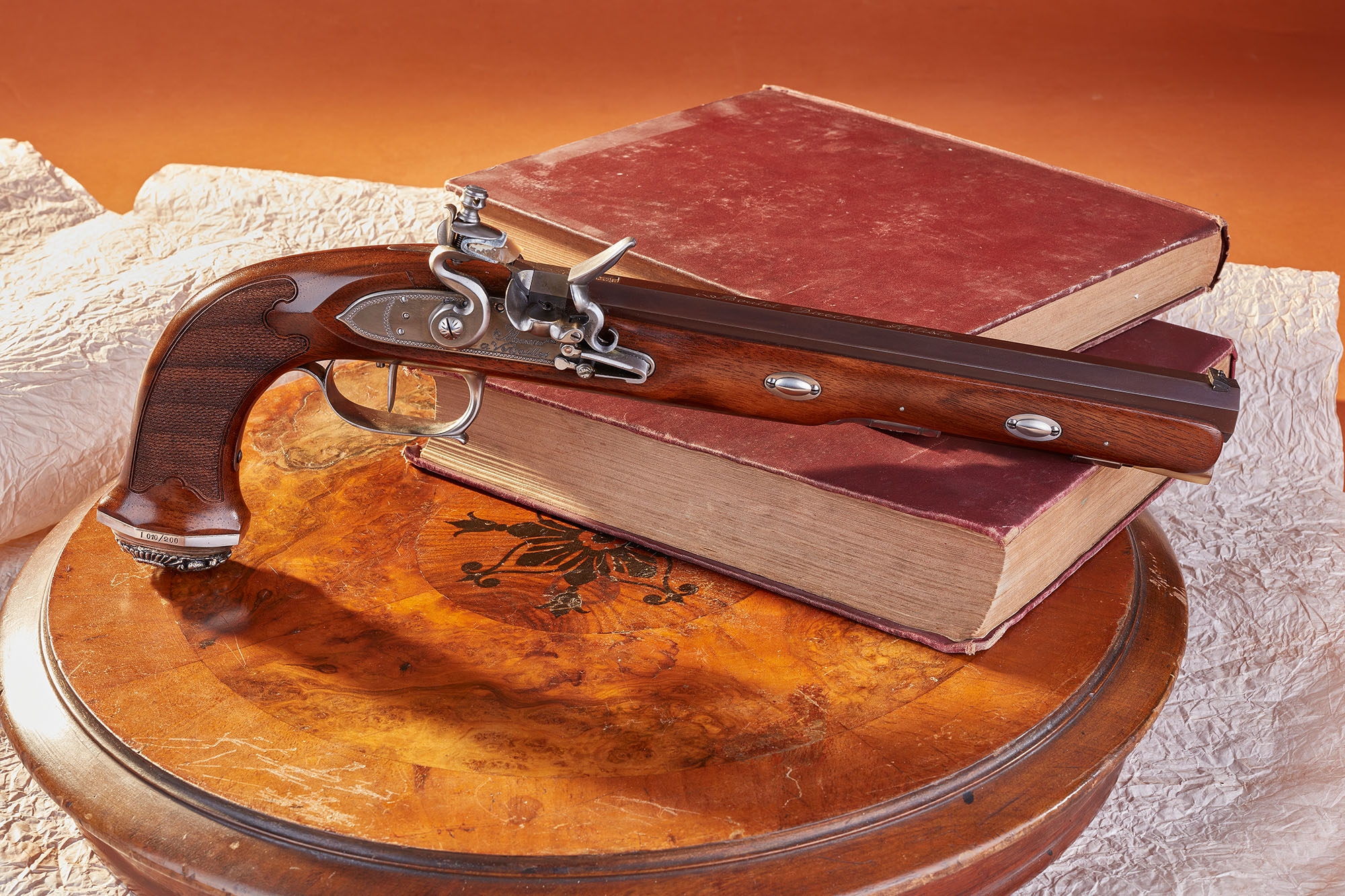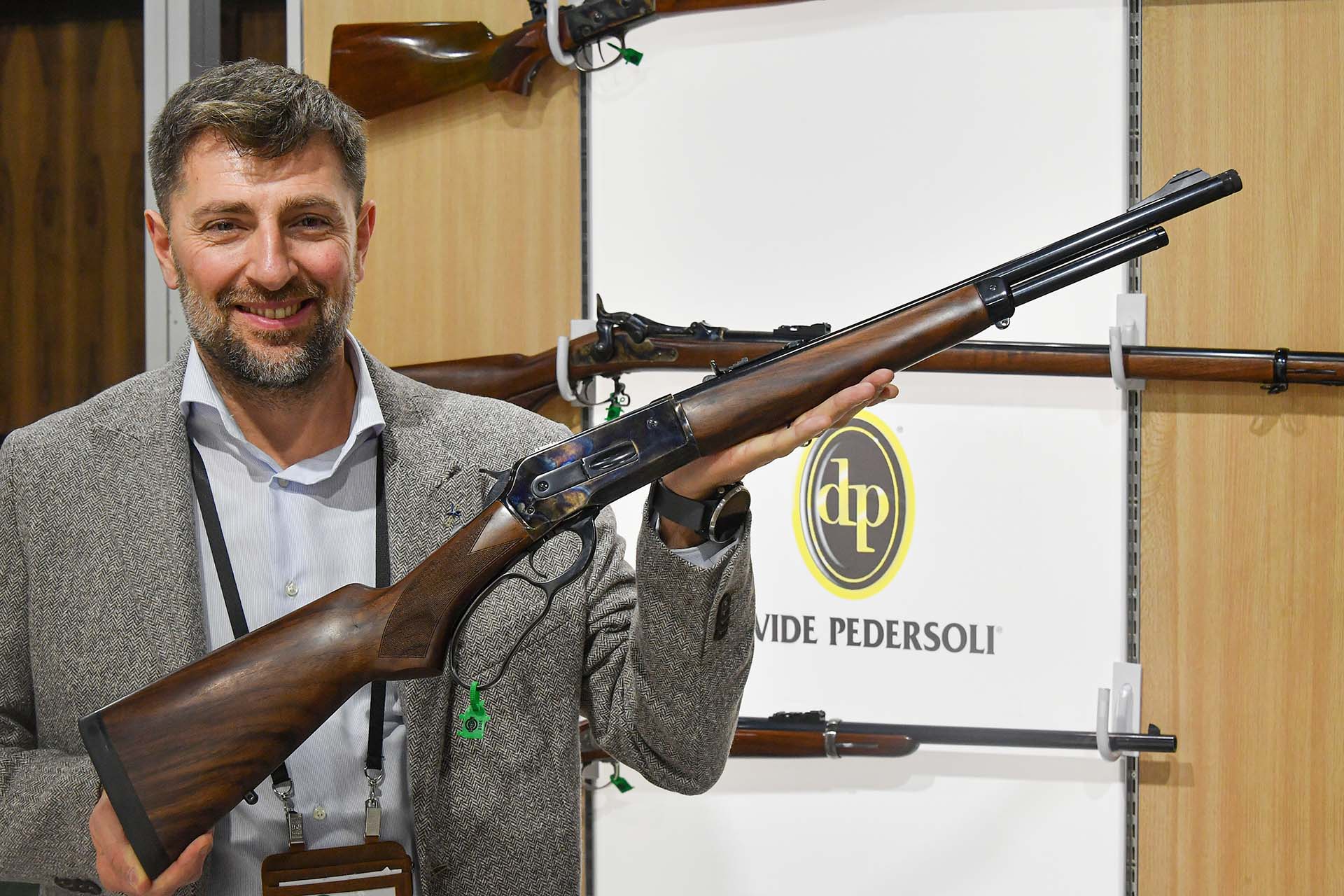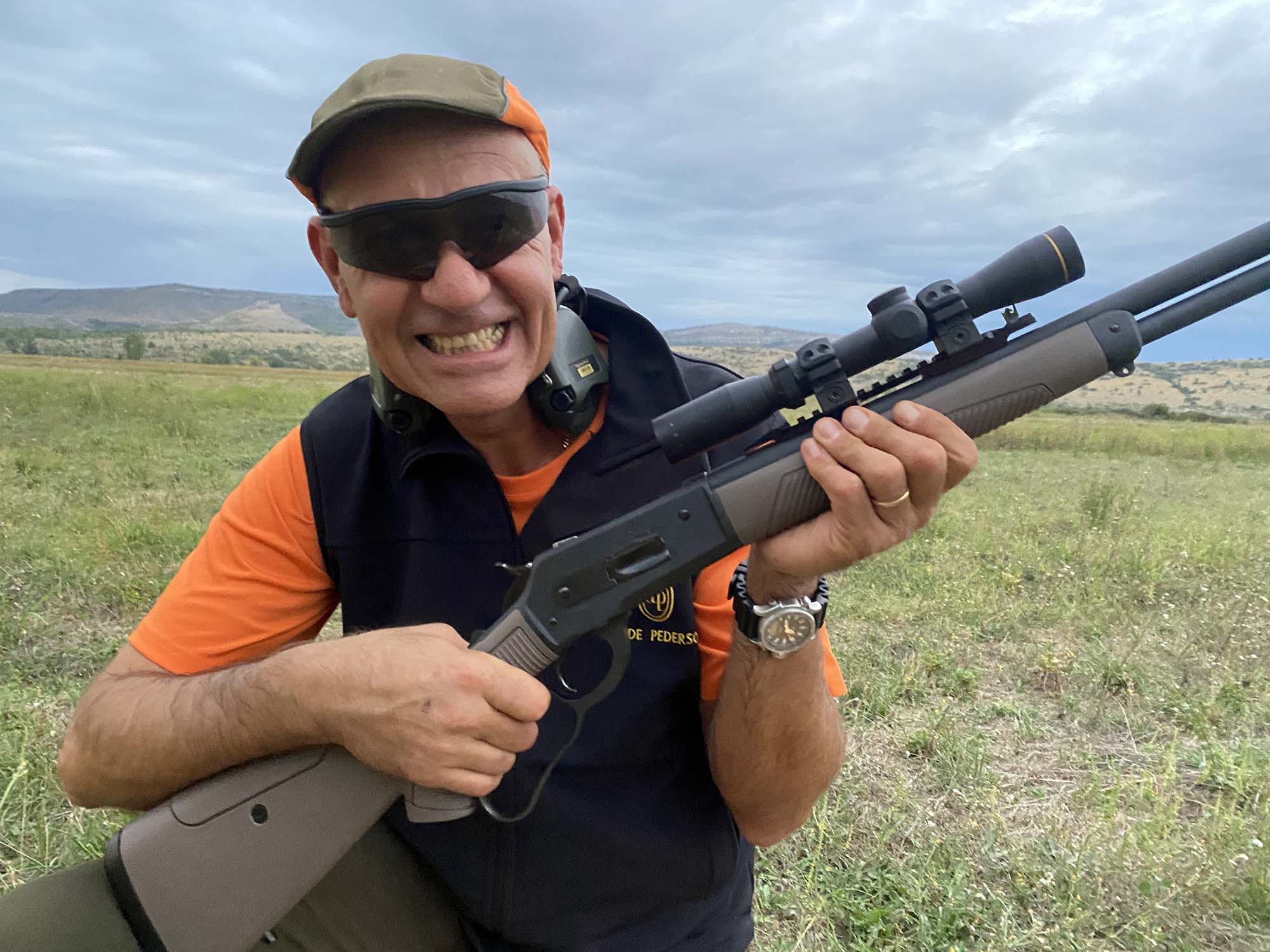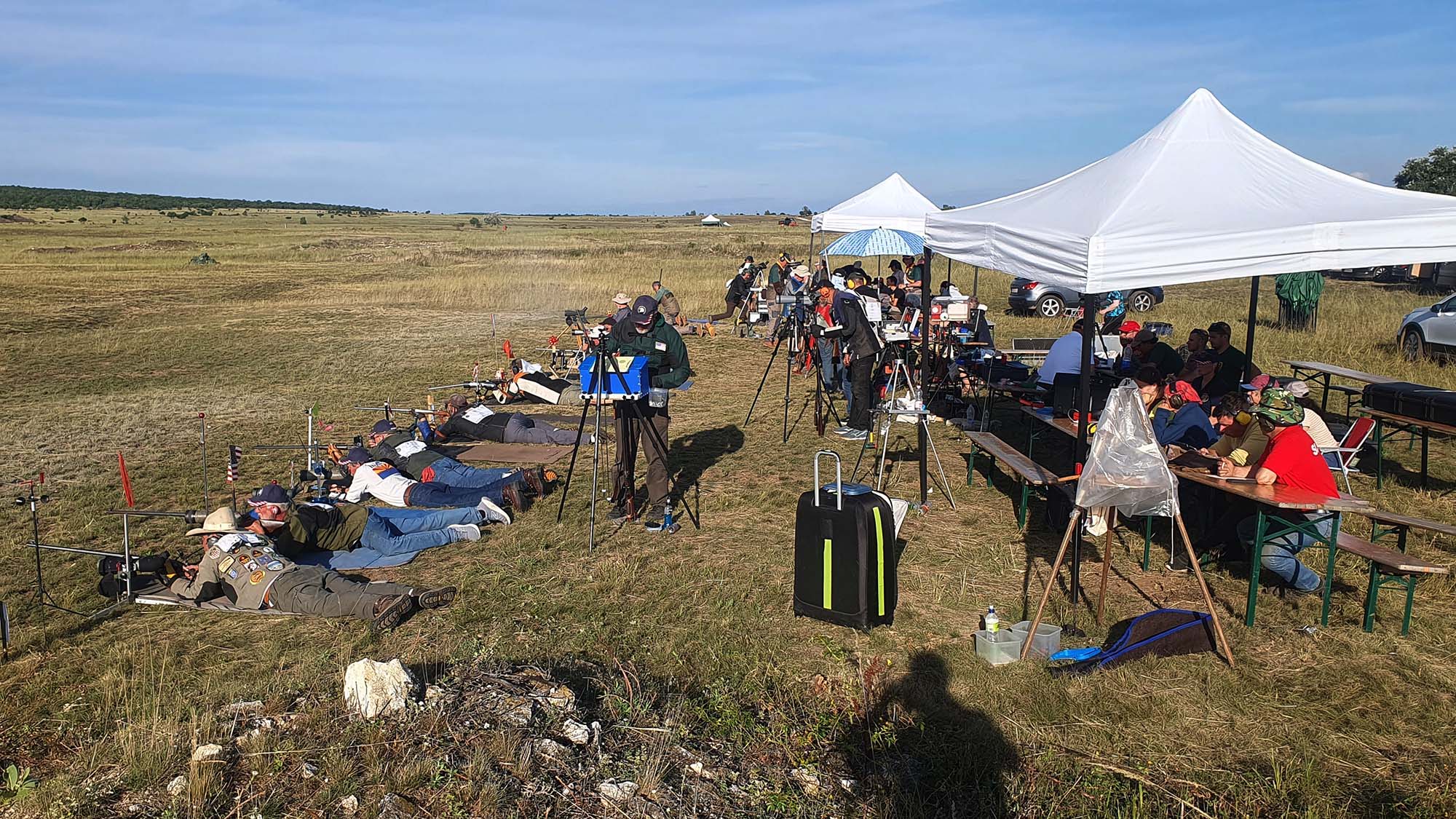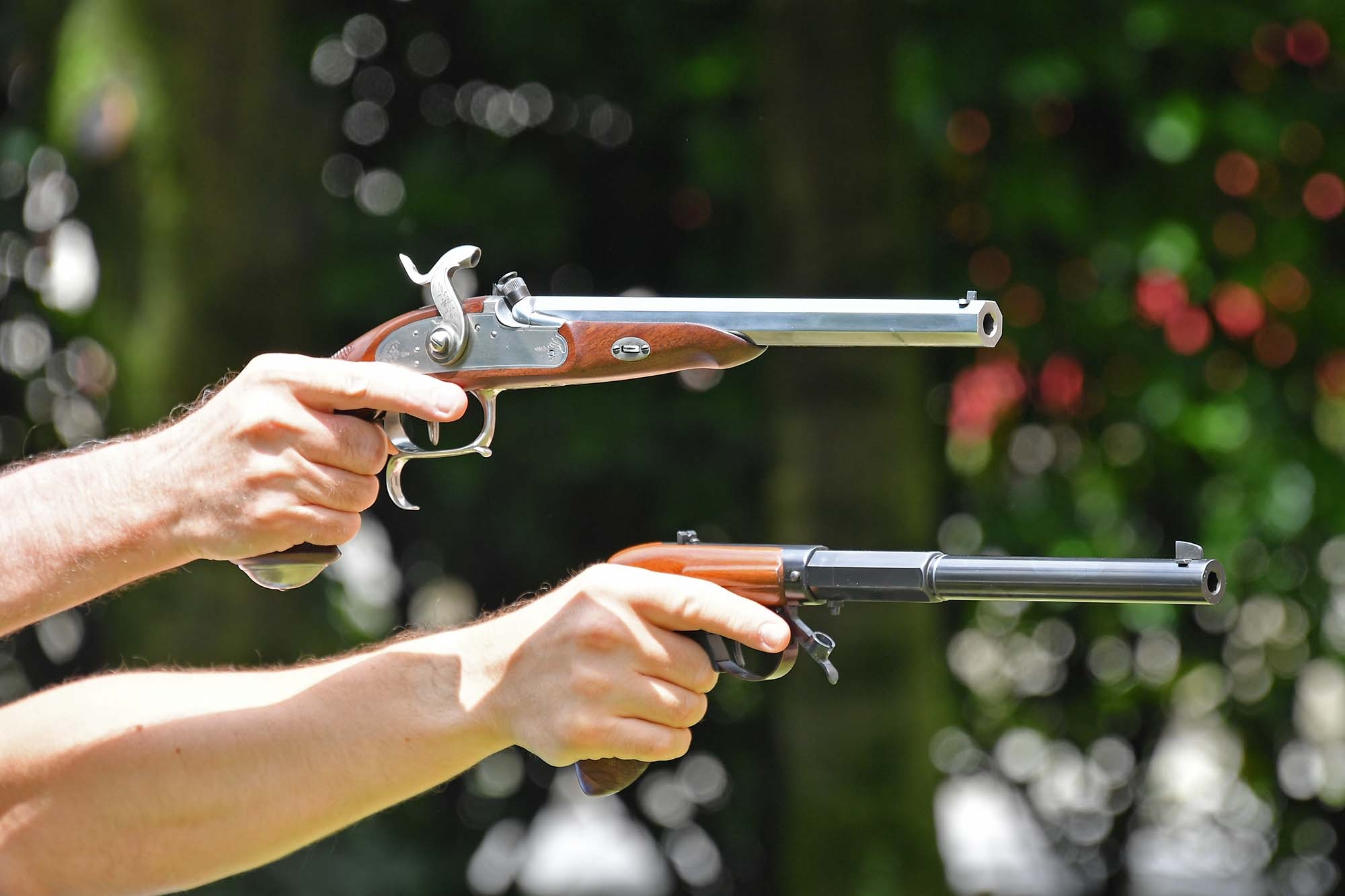Like all American guns of the nineteenth century, the Sharps rifle was designed for military purposes and belongs to the small family of rifles with a falling block action of which Christian Sharps was the forerunner, having filed a first patent already in the mid 1800s. Initially conceived for black powder cartridges, featuring a case made of paper or linen fabric and a separate primer, it fired 475-gr Minié-type balls in .52 caliber. The 1859 model found its recognition during the American Civil War, thanks to the greater firepower than muzzle loading weapons that it guaranteed to infantry, but it was the 34” octagonal barrel and its long-range accuracy that ensured the Sharps rifle the long-lasting reputation that still enjoys today, even if the high production costs at the time limited production of this model to just 11.000.The shortened cavalry version was widely used by both Union and Confederate troops, and in the Indian Wars that followed the end of the conflict too.
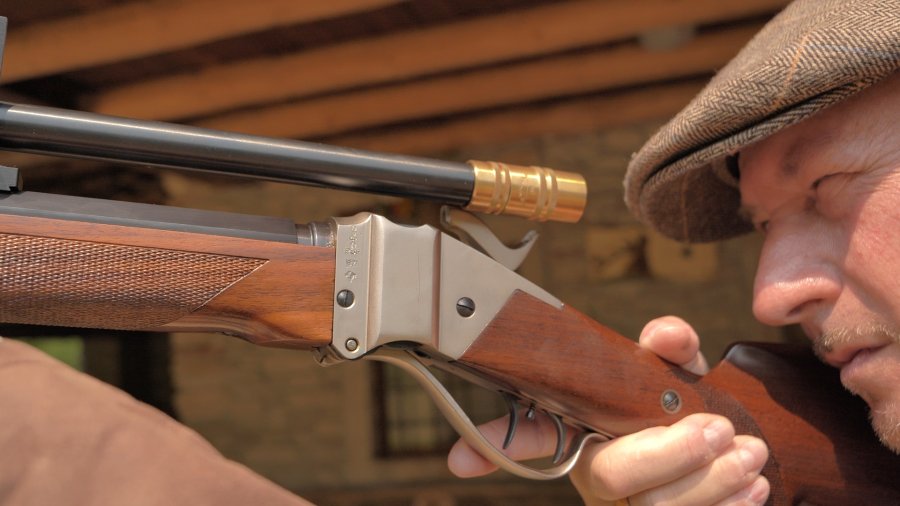
History of the Sharps rifle
The development of metal cartridges at the end of the 1860s caused a process of conversion of the previous models to the .50-70 caliber, while giving new life to the production of these rifles, now manufactured in many variations. It was perhaps the arrival in Europe of a few thousand rifles for Napoleon III’s troops engaged in the Franco-Prussian war which prompted some gunsmiths from the Old Continent to give consideration to the falling block action, first of all the Belgian Hubert-Joseph Comblain who, in 1870, manufactured in Liège a rifle very similar to the Sharps as far as the breech opening system was concerned, known as the M1870 Belgian Comblain (there were a Brazilian version in 1873 and a Chilean version in 1874), but featuring with a different cocking and firing system, without an external hammer. The Major of artillery Efstathios Mylonas introduced a subsequent modification to the Comblain version, entrusting the production to another Belgian arms factory, that of the Emile and Léon Nagant brothers. This caused a lawsuit with the Russian government, resulting in the improper adoption of the name Mosin-Nagant by another well-known rifle among shooters – but that’s another story. However, the M1872 Mylonas falling-block version, which they manufactured, had a limited diffusion in Greece only.
In that same year one of the most famous European-made variants of this model, the Farquharson, was born. John Farquharson filed the patent for his internal hammer rifle in 1872 in Daldhu, Scotland, granting the co-ownership in 1875 to the famous gunsmith George Gibbs of Bristol. Less than a thousand Gibbs Farquharson rifles were made, the last one in 1910. However, when the patent expired in 1889, several English manufacturers proposed their own models chambered in large calibers and intended for the great African game: among them names such as Westley Richards and Jefferey. The famous English professional hunter, naturalist and explorer Frederick Courteney Selous regularly used his Gibbs Farquharson in .461 on buffalo and elephant safaris. In 1878 Sharps produced the latest version of a single-shot falling-block gun, this time based on the patent of the German engineer Hugo Borchardt, which provided for the elimination of the external hammer. Despite the very high quality of this rifle, which was revolutionary for its time thanks to the introduction of coil springs, it proved a commercial failure. But already at the end of the Civil War and immediately afterwards, with the introduction of Spencer magazine rifles in 1864 and Winchester rifles in 1866, it was clear that the fate of single-shot guns had been sealed and the Sharps Rifle Manufacturing Company closed its doors in 1881.
The Sharps 1874 rifle became the professional buffalo hunters’ gun par excellence, thanks to its accuracy and large caliber, which allowed them to shoot down the animals from a safe distance, limiting the risk of being charged and dispersing herds more slowly. This rifle accompanied the decline of the American frontier, being thus inextricably linked to that epic - both tragic and extraordinary at the same time – that was a part of the cultural heritage and the games of many kids from some years ago.
Pedersoli’s replica of the Sharps rifle
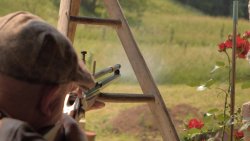
Shooting with the Pedersoli replica was rewarding and caused me to think that, perhaps, without that kind of childhood and without a knowledge of the historical context that saw its birth, not everyone can fully appreciate what it means to see a target hit at 300 m with this rifle – but it this a purely personal impression.
I won’t bore you with specific details of the rifle, just suggesting readers to visit Pedersoli’s website, which is much more comprehensive. The tested version is the Competition Model in .45-70, equipped with 4x Malcom scope, a replica of the scope produced by William Malcom in 1855 in Syracuse. Although I’d have liked a peep sight, the scope greatly facilitates aiming and shooting, even if I noticed a loss of accuracy after a few shots and the consequent need to re-zero it.
The rifle is elegant, beautiful, finely crafted: just manipulating it and looking at it is already satisfying, and firing it was an experience that was really worth doing.
For more information about the Sharps, visit the Davide Pedersoli & C. website.



